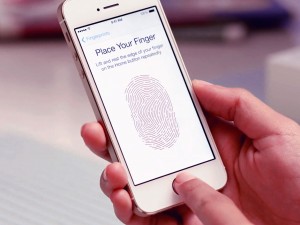
Recently Apple added the Touch ID Sensor to the new iPhone device. It is a biometric control that claimed to be pretty secure, after all it’s a biometric control. Biometrics are usually harder to break than other types of mechanisms and they are harder not just because how they are implemented but because of the difficulty in acquiring the required material to spoof it. In a recent post by The Hacher News (http://thehackernews.com/2013/09/finally-iphones-fingerprint-scanner.html) a group of infosec specialist found a way to fool the biometric control giving it a fake fingerprint (watch the video). While this is not actually hacking the system but it’s a way to unlock the device.
I am sure there will be more post and news doing the same thing. Even that’s one of the first things I think when I saw the new feature. There are a lot of ways to fake fingerprints: jelly, glue, stickers and more. I prefer glue it’s the easiest way and if you use a fake fingerprint to bypass a biometric mechanism you are not actually hacking the system. The security of these controls is based, as I previously said, on the difficulty in acquiring the real fingerprint. Sure, you are leaving your fingerprints everywhere in everything you touch but getting a good one that could work can be really hard.
To hack the system you would have to give the system another fingerprint and force the system to authenticate with that fingerprint. Because it is a very difficult process it is usually easier to obtain the victim fingerprint.
Would you trust in the Touch ID security system ?
Month: September 2013
PassMark en la banca por Internet de Santander
Recientemente Santander comenzó a liberar una actualización en su banca por Internet llamada Supernet. La actualización se enfoca específicamente en el modelo de seguridad que utiliza para proporcionar acceso a los usuarios a su cuenta. De qué trata este nuevo modelo de seguridad? Originalmente con las credenciales fortalecidas que nos solicitan ahora los bancos para acceder a nuestras cuentas + los tokens que nos proporcionan para teclear el número que nos arroja + algún número de cuenta, número de cliente, num de tarjeta, etc etc etc, lo que los bancos quieren lograr es garantizar que el usuario correcto, en este caso nosotros, estamos accediendo a nuestra cuenta y no que cualquier otra persona, un hacker por ejemplo, pueda acceder a nuestra cuenta, es decir, esos mecanismos garantizan hasta cierto punto que el cliente o usuario es quien dice ser. Pero, quien nos garantiza a nosotros que la aplicación es a la que realmente queremos acceder ? No por el hecho de que en nuestra barra de direcciones aparezca el dominio completo y correcto de la aplicación implica que es la aplicación real del banco. Existen ataques como el pharming o algunos tipos de Man In the Middle que podrían falsificar la aplicación y enviarla al usuario aparentando ser la aplicación real cuando realmente es otra preparada específicamente para obtener nuestros datos confidenciales. Bueno, esa actualización de seguridad que se liberó es precisamente para garantizar, hasta cierto punto, eso.
Este método de seguridad surgió hace ya varios años e irónicamente se supuso que no iba a dar los resultados esperados ya que tiende a ser muy sencillo (sin tanta criptografía o mecanismos complejos de por medio). Se le llamó PassMark y poco a poco las instituciones bancarias lo fueron adoptando hasta ahora llegar a México.
Continue reading PassMark en la banca por Internet de Santander